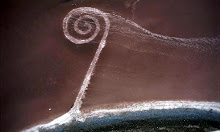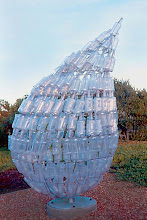Susan Howe is a prominent American poet born in Boston, Massachusetts in 1937. She has written several books of poetry, including Midnight (2003) and Kidnapped (2002), along with two volumes of literary and poetic criticism. Howe was greatly influenced by Charles Olson, author of The Maximus Poems. Like Olson, Howe manipulates language and textual design in order to fit with the basic situationalism of the poem. One example of this is in her poem, "Rückenfigur." The lines in this poem are broken where the reader would naturally take a breath as to help the rhythm of the poem fit with the situation. In this way, the poem's line breaks and overall textual appearance adds to the meaning of the poem itself.
Below is the first stanza of "Rückenfigur." Notice how each line breaks not where the idea ends, but right about where the reader needs to take a breath. For the full poem, click here.
Iseult stands at Tintagel
on the mid stairs between
light and dark symbolism
Does she stand for phonic
human overtone for outlaw
love the dread pull lothly
for weariness actual brute
predestined fact for phobic
falling no one talking too
Tintagel ruin of philosophy
here is known change here
is come crude change wave
wave determinist comparison
Your soul your separation
Subscribe to:
Post Comments (Atom)










No comments:
Post a Comment